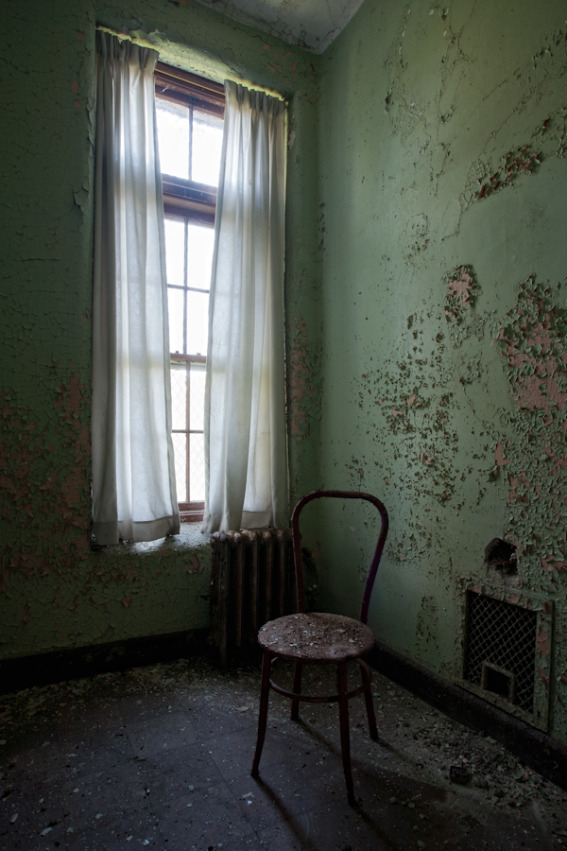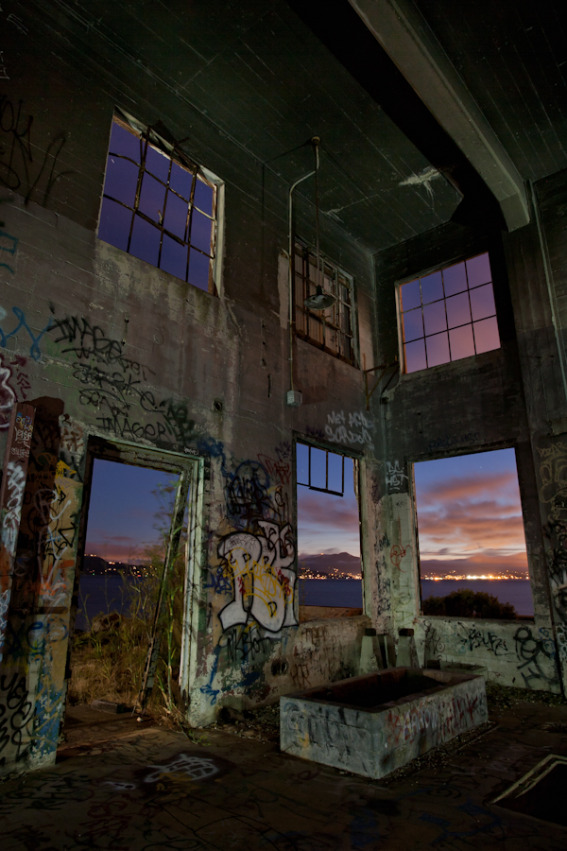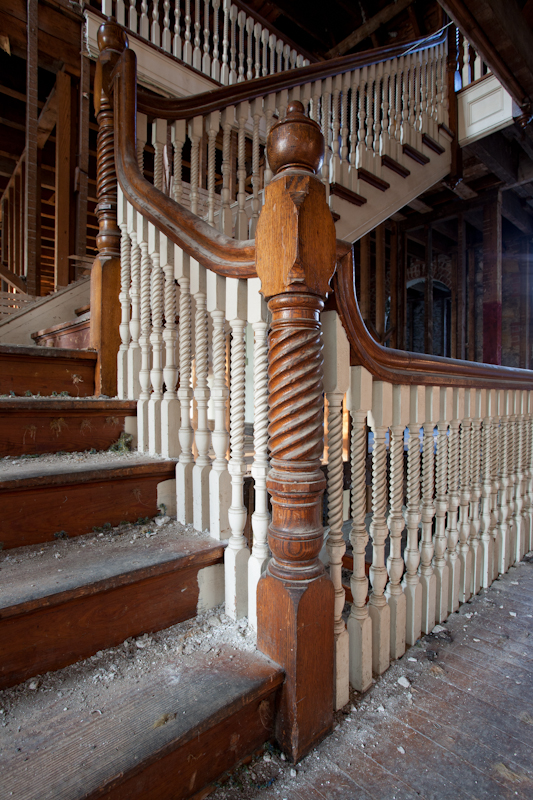Employee shower room in the New Milford Plant of the Hackensack Waterworks in New Jersey.
(Dark interior, 90 seconds. Lit by incandescent and LED flashlight.)

Employee shower room in the New Milford Plant of the Hackensack Waterworks in New Jersey.
(Dark interior, 90 seconds. Lit by incandescent and LED flashlight.)

Patient room window in the male ward at Hudson River State Hospital in Poughkeepsie, New York.

Nurse quarters at Fairfield Hills State Hospital.
This former psychiatric hospital in Connecticut, received its first patient in 1933 from the nearby Connecticut Valley State Hospital. When the hospital opened, there were only 500 patients and 3 doctors, but by the 1960's, Fairfield was home to 4,000 patients, 20 doctors and 50 nurses, who were living in these nurses quarters. Treatments included hydrotherapy, insulin in shock therapy, patient seclusion, electric shock therapy and frontal lobotomy. A number of accounts of patient cruelty were reported while the hospital was in operation. In 1995 when the hospital closed patients were transfered back to Connecticut Valley Hospital.

In 2007 the male wings of the hospital were severely destroyed by a fire caused by a lightning strike.
Hudson River State Hospital in Poughkeepsie, New York was designed by Frederick Clarke Withers and was the first institutional building designed in the High Victorian Gothic style. Though designing began in the 1860's, construction was behind schedule and over budget. The facility opened in 1871, however construction continued throughout the last three decades of the 19th century. The administration building and wings followed the Kirkbride plan and was 1,500 feet long in total.

Pistons of the Allis-Chalmers 5 story certical pumping engine at the New Milford Plant of the Hackensack Waterworks, a late 1800's era brick filtration and pumping plant in New Jersey.

Patient room inside the Salmon Building, the male violent ward, at Norwich State Hospital.

The sun porch at the St. Mary's School Abbey faced the Hudson river and gave a great view of the surrounding landscape. The building was constructed in 1876 and remained in use for over 100 years. The building was vacated in 2003 when the Sisters relocated to Greenwich, New York.

Point Richmond, California.
Night. Full moon. 80 seconds. Interior lit by LED flashlight. Exterior lit by moon and ambient light.

Whirley Crane at the Kaiser Shipyard #3.
The Richmond Shipyard #3 was one of four shipyards in Richmond, but the only one designed to be permanent. Toegether, the four shipyards produced 747 ships during World War II, which was more than any other yard in the country. The Shipyard used “Whirley” cranes to move prefabricated ship components into place. The Whirley Crane got its name due to the crane's ability to turn a full 360 degrees, which allowed the boom to achieve efficient speed.

This stairwell in the Salmon Building, home to the male criminally insane, at Norwich State Hospital would have been flanked at the top and bottom by a metal door. This would have prevented the patients from getting very far if one should escape. Fortunately, during the 70 years of the hospital's operation, no escapes were recorded from Salmon.

Most of the interior of the 1876 Abbey of St. Mary's Convent was gutted between 2003 and 2008, but the three intricately detailed staircases still remain.

A fern grows out of the wheel well of an abandoned crane at the Kaiser Drydocks in Richmond, California.

San Francisco at night, taken from Alcatraz during the June Nocturnes excursion.

Sun porch in the building 1 of the women's wards at this New York Tuberculosis Hospital.
In the 20th century, treatment for tuberculosis was based on ample light and fresh air. Sun porches were constructed in most tuberculosis hospitals as it was believed they would help ail those infected with the diseases.

The No.7 Allis-Chalmers 5-story vertical triple expansion pumping engine at the Hackensack Waterworks.